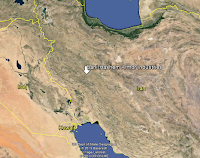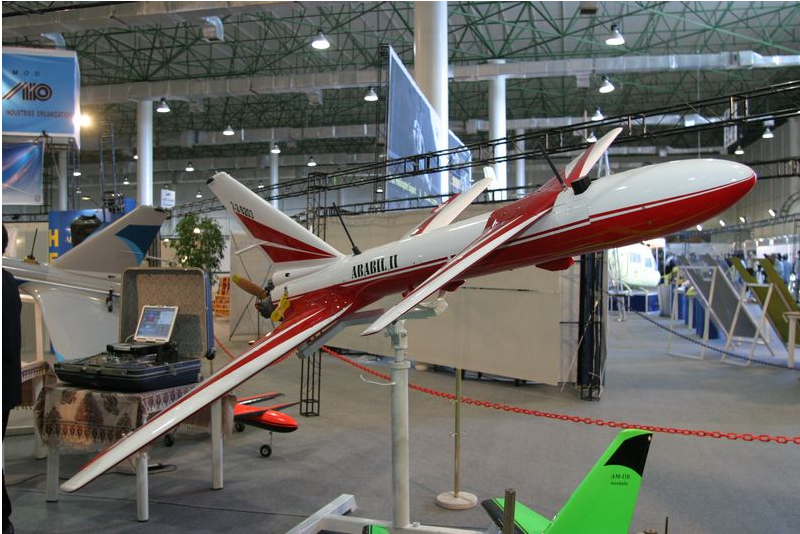The Bani-Hashem Armored Complex
The Bani-Hashem Armored Complex
Following the conclusion of the Iran-Iraq war in 1988, the new president of the Islamic Republic– Hashemi Rafsanjani – was tasked with rebuilding a shattered country. Not least of all, this meant rebuilding the Armed Forces's depleted inventories. Reflecting the broader shift towards pragmatism that took place during the Rafsanjani administration, Tehran turned towards the USSR to rebuild it's armored forces, the same state whose deep fear of Khomenei's revolutionary ideology drove it to back Saddam's Iraq to the hilt during the eight-year war.
Following a handful of deals in 1989, and 1990 a major agreement for the production of armored vehicles was signed in 1991. Mikhail Barabanov, in a 2006 issue of 'Moscow Defense Brief', describes the deal:
"The fourth and the largest ($2.2 bln) contract was signed on November 13, 1991 for the licensed production in Iran of 1000 T72S tanks and 1500 infantry fighting vehicles, as well as ammunition and delivery of parts not licensed for production until 2011. Russia built the tank factory, which began production on July 8, 1997 in Dorud (Lurestan province), and the BMP-2 factory, which started work in 1998, in Tehran."
Uralvagonzavod delivered 100 T-72S tanks to Iran in 1994 and another two in 1996 to fulfill an agreement signed in 1993, and from 1996 to 1999 delivered 300 T-72S kits to Dordud. The assembled tanks were first brought into service in July 1998. The Kurgansk machine building plant sent 80 BMP-2 in 1993 and another two in 1996, and then delivered 331 kits for licensed assembly in Tehran. Thus, from 1993-2000, Iran received 422 T-72S tanks and 413 BMP-2 infantry fighting vehicles for a total cost of $668 mln."
This post-ideology honeymoon, however, was not to last, Barabanov continues:
"The US objected to these sales from the start and aggressively lobbied ... Russian leadership on this issue from 1992 onwards. The campaign was successful, and in May 1995 Bill Clinton and Boris Yeltsin agreed on a plan [The Gore-Chernomyrdin Memorandum] whereby Russia would undertake to fulfill agreements already signed with Iran by the end of 1999, at which point it would cease all deliveries and servicing and would sign no further agreements on arms trade. ...
By the time the memorandum was signed, Russia had fulfilled only the first ... contract ... for the delivery of aircraft and AD missile systems. The other three Soviet-Iranian agreements were annulled... by 2000, such that the total sum of deliveries under all four contracts was less than $3 bln. The November 1991 contract for the licensed production of tanks and infantry fighting vehicles of was only 30% fulfilled: arms and equipment not sent included 578 T-72S and 1087 BMP-2 kits, technical documentation relating to the license, equipment, ammunition and services with a total value of over $1.5 bln." (1)
Although Moscow dispensed with Gore-Chernomyrdin by 2000, the resumption of AFV-exports never materialized. Looking outward from Tehran, the siege-mentality honed during the Iran-Iraq war explained Russia's actions all to well; that both Russia and China had used their arms-sales as a bargaining-chip in their maneuvers with the West confirmed to Iran that they existed in a world full of great-powers looking to exploit them and could not be reliably counted upon to ensure Iran's security. In other words, with apologies to de Gaulle, Iran had no permanent friends, only permanent interests.
 |
| (GE) |
It was in this manner that the trope of self-sufficiency – never seriously in danger anyways – gained further traction, and – somewhere along the line – MODAFL continued with the development of the 'Bani-Hashem Armor Complex' in Dorud to make up for foreign shortfalls.
Compared to nearby industrial complexes, several features identify it as a heavy military-goods production facility. First, user annotations on Wikimapia identify it as the Bani-Hashem facility, though since these can be innacurate, this alone is not definitive. Second, the 'Cement Iran' website lists its address as "Kilometer Four, the Old Doroud-to-Azna Road", which is consistent with imagery from Wikimapia (using the Google's street maps layer). (2) Third, there are distinct perimeter-control walls with regularly spaced watchtowers, which are typically characteristic of military facilities (though not unheard of in Iranian civilian-industry). Fourth, and most importantly, is the attached automotive test track to the south of the facility. One feature lacking, that is typically found in heavy-equipment facilities, such as the NEZAJA's main repair depot in Tehran, is an attached rail facility for importing raw materials, and exporting finished goods (although there is a rail-line in Dorud).
Available Google Earth imagery dates from February 2006, and September 2010, though the latter is only in black and white. Higher quality imagery from Bing Maps is available from November 2011, and May 2012.
 |
| Wikimapia/Bing Maps |
In addition to the factory, there are three additional compounds including at least two residential housing complexes, complete with power-generation, sports, and school facilities. The third area, along the Old Road, likely contains administrative offices (given the lack of such buildings in the factory-complex itself). To the south of the factory is a basic automotive test track that is comprised of two parts, a 4+ km oval, with another 5+ km of track attached to it.
The main assembly workshop can be found to the west of the complex's main road and is easily identified thanks to it's large size. It is a heavy steel-beam structure with east-west gabled roofs with south-facing windows for illumination. Running the length of these workshops are gantry-cranes needed for moving heavy equipment. Surounding the main workshop are a variety of smaller buildings of indeterminate type. Between 2006 and 2012, no major construction was undertaken, though a handful of minor buildings were razed, several buildings – the largest of them likely being material storage of some kind – were erected.
| Original Source(s) Unknown |
To the east of the complex's main road is a power generation facility, and additional steel-framed, gable-roofed workshops. It is reasonable to assume that these contain the complex's component-fabrication industries. A March, 2005 IRIB article gives some clue as to what exactly these buildings contain, including a booster-furnance, which is claimed to be the "largest in the Middle East", a pneumatic forging hammer, which is claimed to be able to manufacture parts that weigh "...more than 300 kg", thermopress machines, gas/laser/plasma-cutters, IGM (it is unclear what this is), and a "very heavy" (160-2500 ton) metal press. (3) Other sources add to this, listing facilities for making iron, steel, and aluminum castings. (4)
Following the final assembly of Russian T-72 kits in 2000, the factory has remained in service. By 2005 the factory was claimed to be turning out 1,916 tank, 1,636 APC, and an unspecified number of SPG components. Currently, it appears that the factory is also producing non-armor, and/or non-military automotive and structural products. (5)
While the majority of the cited components are likely to be spare parts needed for basic upkeep – the earliest incarnations of the DIO export catalogue advertised suspension, power-plant/transmission, armament, and cooling/lubrication systems – the question of whether Iran is producing T-72s remains unanswered. The possibility should not be dismissed, especially since the most recent DIO catalogue appears to advertise the entire tank, rather than simply upgrades for them. (6) This possibility, however, appears impossible to prove at this juncture, and although the absence of evidence is not the evidence of absence, there is a notable lack of armored vehicles in open-air storage at the Bani Hashem factory. This contrasts with, for example, visible M1s at the Lima tank plant (USA) and visible Leopards at the Krauss-Maffei plant (Germany).
Works Cited
(1) Russia on Iran's Market for Arms. Mikhail Barabanov. Moscow Defense Brief. 2006 Is. #1
(2) http://www.cementiran.com/node/776
(3) Iranian Self-Sufficiency in the Construction of Armored Vehicles. IRIB. March 12, 2005 Via: http://www.topiranian.com/topnews/archives/002165.html
(4), (5) http://www.parstradeshow.com/companydetail.aspx?coid=271213
(6) DIO Products. Section 5, VEIG. http://diomil.ir/products.html

.jpg)

Comments
Post a Comment